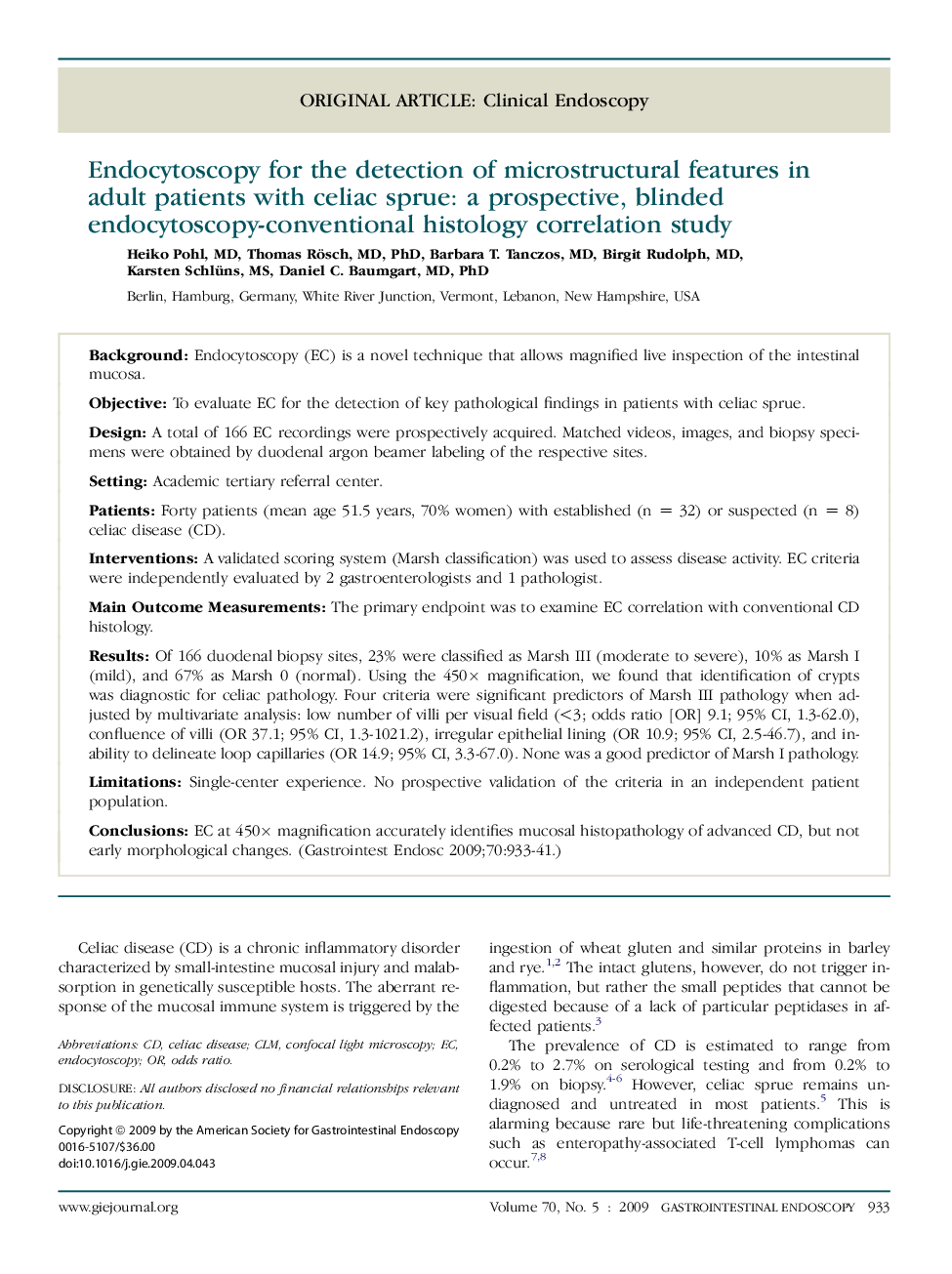| Article ID | Journal | Published Year | Pages | File Type |
|---|---|---|---|---|
| 3307519 | Gastrointestinal Endoscopy | 2009 | 9 Pages |
BackgroundEndocytoscopy (EC) is a novel technique that allows magnified live inspection of the intestinal mucosa.ObjectiveTo evaluate EC for the detection of key pathological findings in patients with celiac sprue.DesignA total of 166 EC recordings were prospectively acquired. Matched videos, images, and biopsy specimens were obtained by duodenal argon beamer labeling of the respective sites.SettingAcademic tertiary referral center.PatientsForty patients (mean age 51.5 years, 70% women) with established (n = 32) or suspected (n = 8) celiac disease (CD).InterventionsA validated scoring system (Marsh classification) was used to assess disease activity. EC criteria were independently evaluated by 2 gastroenterologists and 1 pathologist.Main Outcome MeasurementsThe primary endpoint was to examine EC correlation with conventional CD histology.ResultsOf 166 duodenal biopsy sites, 23% were classified as Marsh III (moderate to severe), 10% as Marsh I (mild), and 67% as Marsh 0 (normal). Using the 450× magnification, we found that identification of crypts was diagnostic for celiac pathology. Four criteria were significant predictors of Marsh III pathology when adjusted by multivariate analysis: low number of villi per visual field (<3; odds ratio [OR] 9.1; 95% CI, 1.3-62.0), confluence of villi (OR 37.1; 95% CI, 1.3-1021.2), irregular epithelial lining (OR 10.9; 95% CI, 2.5-46.7), and inability to delineate loop capillaries (OR 14.9; 95% CI, 3.3-67.0). None was a good predictor of Marsh I pathology.LimitationsSingle-center experience. No prospective validation of the criteria in an independent patient population.ConclusionsEC at 450× magnification accurately identifies mucosal histopathology of advanced CD, but not early morphological changes.
